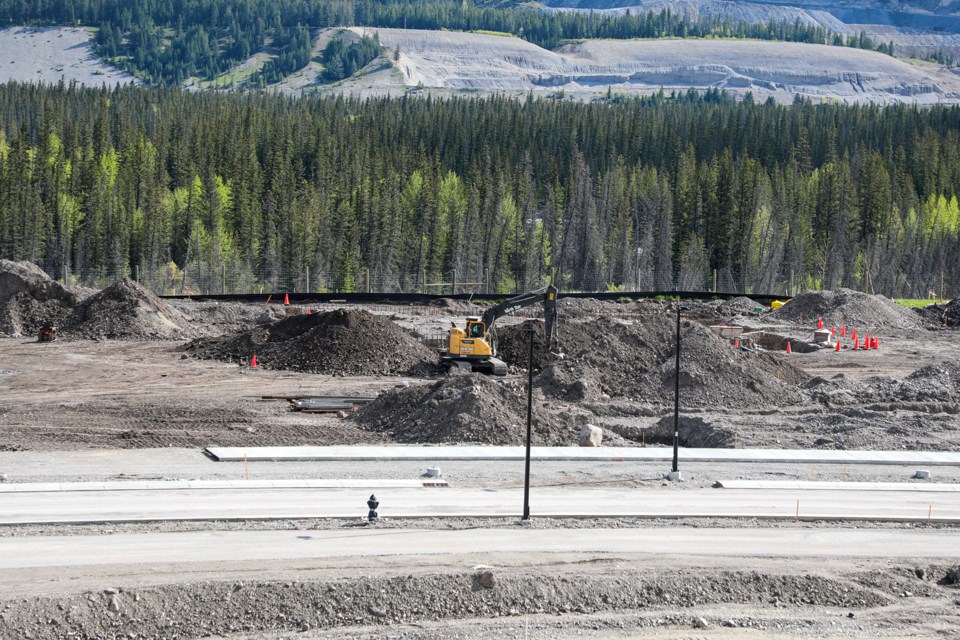CANMORE – A key guiding document for development in Canmore is in the midst of review.
The Town of Canmore and Bow Valley Builders and Developers Association (BOWDA) are working toward an update for the engineering design and construction guidelines (EDCG).
The guidelines cover all forms of development from small, medium to large, as well as encompass different permitting types.
“The EDCG set out certain specifications and guidelines for design of municipal infrastructure, so they would be how we would measure a development permit application,” said Brian Kinzie, a municipal engineer with the Town. “We would use the EDCG to determine if the application complies with the EDCG parts and are also used in capital project design.”
Though largely out-of-sight, out-of-mind for the average person, the guidelines use council-approved documents, articulate technical pieces key for development and align with council direction.
It uses key policies such as the Municipal Development Plan, land use bylaw, area structure and redevelopment plans as well as technical documents such as the Utility Master Plan, Integrated Transportation Plan, Integrated Parking Management Plan and several others.
“They provide the technical guidelines in order to allow the Town and developers to construct the community in a way that’s consistent with those documents,” Andy Esarte, the Town’s manager of engineering said. “It ensures we have a level of performance and infrastructure that will last a long time and perform well during its lifespan and to be able to build out the community in a way that’s consistent with those visioning and strategic documents. It’s important we get that consistent outcome, so that each development and capital project is building out in a way that contributes to realizing that vision of council.”
He noted they address unique aspects of Canmore such as steep creeks, undermining hazards, groundwater levels and potential of river flooding.
“The guidelines rely on both those well-established, long-standing best practices for things that we don’t see like concrete and gravel specifications all the way through to address unique aspects of our community and allow us to build to address those hazards or to build our transportation network in a way that’s going to function for us well into the future,” he said.
Ian O’Donnell, BOWDA’s executive director, said the guidelines “act as the foundation for our industry to provide greater predictability and consistency in planning, budgeting and in our development applications” and meant to help with design and construction of infrastructure.
“These guidelines are integral to the work that our members do and outline the requirements for those doing the work to ensure that they comply to the required standards,” he said. “It is critical that these are consistent, clear and objective in nature to help facilitate the efficient and transparent development of lands within the municipality.”
They also reference regional best practices from larger centres such as Calgary and Edmonton.
“The other important piece is their industry standards. There are best practices, there are regulatory requirements, so making sure that infrastructure is done in a safe manner for the public,” Esarte said. “That’s the same for water pipes, sanitary systems, transportation and the way we build things to allow people to move throughout the community.”
It outlines landscaping requirements; documentation needed; site obligations; stormwater, sanitation and water needs; undermining hazards; steep creeks and transportation requirements.
“The [EDCG] are intended to aid developers, engineering consultants, landscape architects and contractors in the design and construction of infrastructure and amenities,” states the 2020 version.
It was first established in 1998, with major revisions having been done in 2005, 2010 and 2020. A full review is meant to take place every five years.
Esarte said there have been discussions on potentially reviewing a section each year, to avoid an intensive process, but they’re “looking at all sections right now. Some have more intensive review than others, but we’re essentially looking at the entirety of the document.”
The landscaping section is one such area looking at being a standalone. It was added to the guidelines in 2020, but with regular changes to FireSmart it could make changes easier in the future.
“We are in discussions with BOWDA to discuss what the future of updates looks like for EDCG. We haven’t come to a conclusion yet, but we’re exploring different models,” Kinzie said.
Canmore Mayor Sean Krausert said council’s aware discussions are ongoing between the Town and developers. He noted they’re not involved in the specifics, but knew “a large number of comments” had been received from the development community.
“They’re working their way through those comments with administration and the discussions have been positive,” he said.
He said the guidelines will return for council approval, with the hope of this year, but that there was no specific timeline.
“The Town and BOWDA are currently working their way through [engineering design and construction guidelines] with the ideal goal that whatever’s presented to council is presentable for all involved,” Krausert said.
“Regardless if a full consensus on all of the guidelines, they will be coming to council for approval in due course. At this point, council has had no discussions in respect to them and we’ll wait for the report from administration based on the current engagements with the development community.”
Both Esarte and O’Donnell said the process has been collaborative between the two sides as they work toward a final product.
“The recent EDCG meetings have been incredibly productive and permitted both the Town of Canmore and BOWDA to openly share ideas, practical constraints in a constructive manner that will be beneficial to all parties, ratepayers and industry moving forward,” O’Donnell said. “This process will be a model for future meetings and reviews.”




